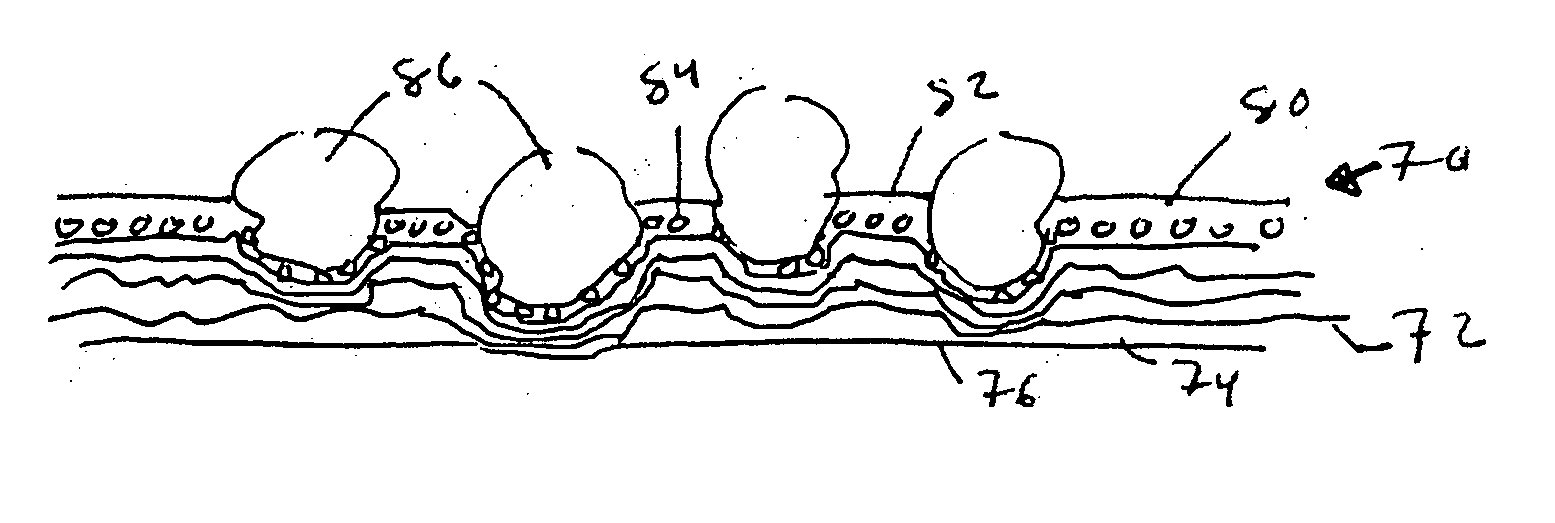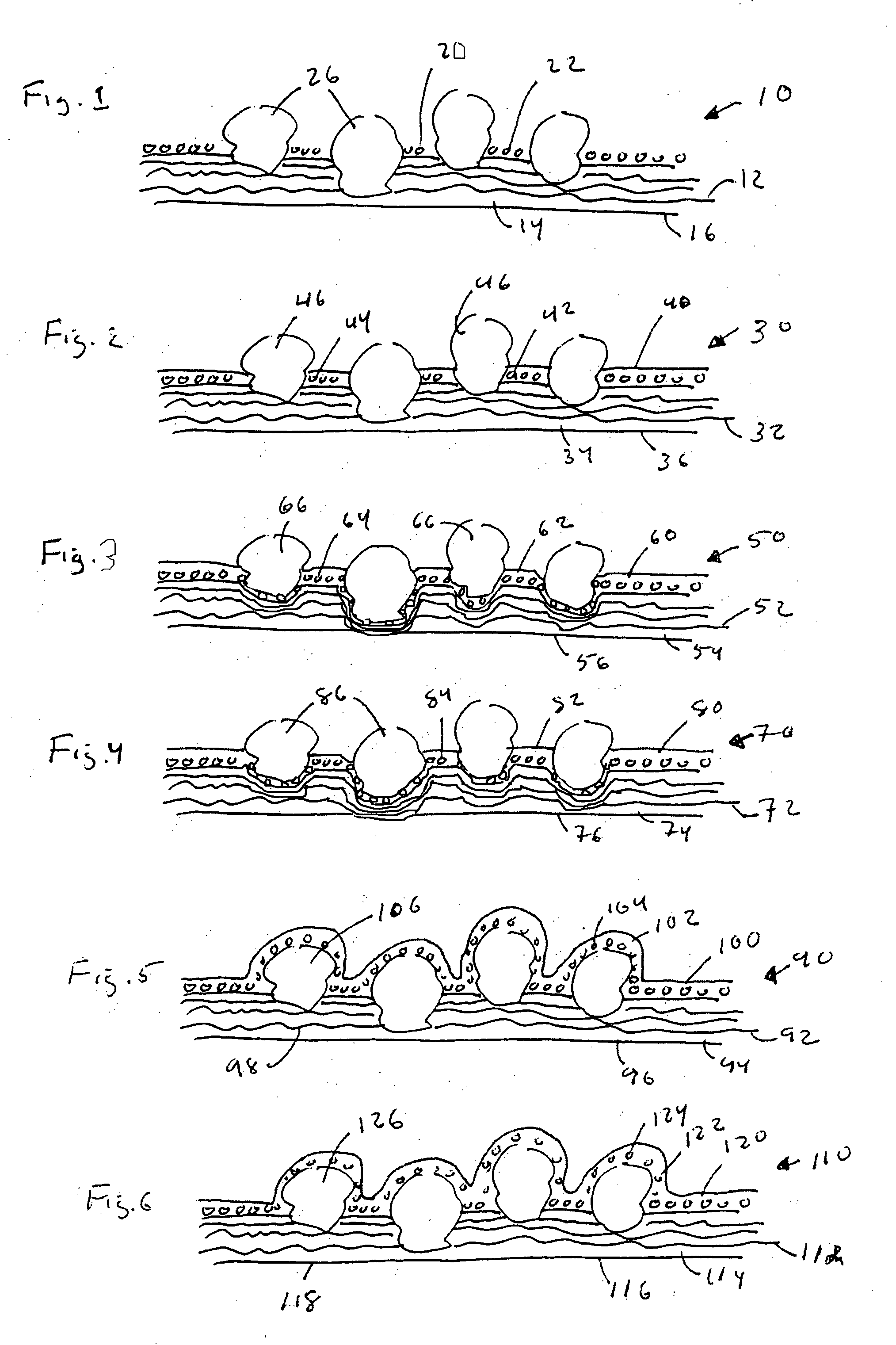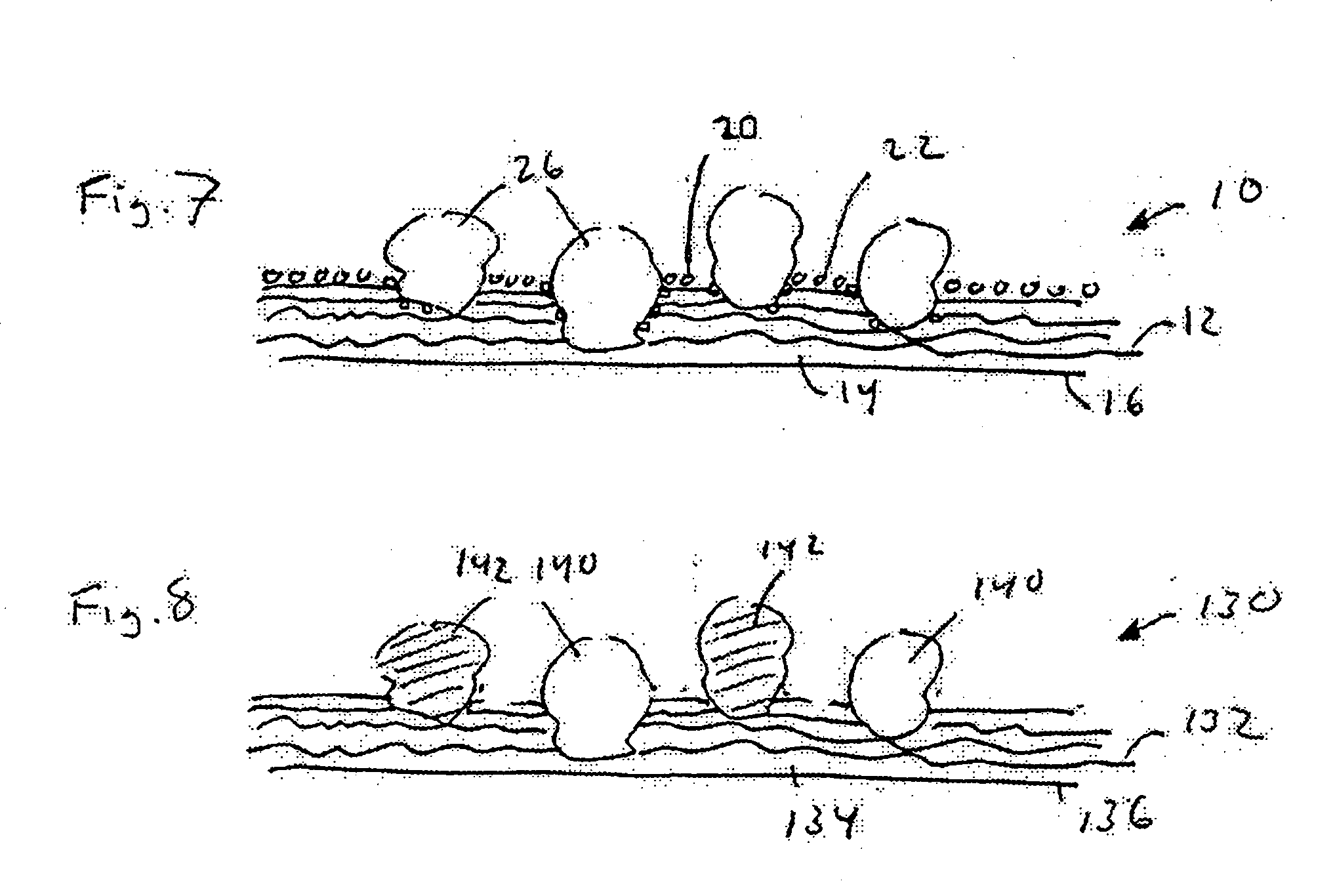Mineral-surfaced roofing shingles with increased solar heat reflectance, and process for producing same
- Summary
- Abstract
- Description
- Claims
- Application Information
AI Technical Summary
Benefits of technology
Problems solved by technology
Method used
Image
Examples
example 1
[0116] Asphalt panels about 4″×4″×⅛″ thick were prepared on an aluminum backing by using coating grade asphalt from a Venezuelan crude source and filled with 63 wt % calcium carbonate fillers to achieve viscosity of 2600 cps at 400° F. The resultant asphalt panel has only 5.2% solar heat reflectance as measured by the ASTM C1549 method using a portable solar reflectometer (Model SSR-E from Devices & Services, Dallas, Tex.). To increase the solar reflectance of the asphalt coating, a fine powder of a pearlescent pigment (TZ1004 available from Global Pigments, LLC, White Plain, N.Y.), was deposited on the molten surface of asphalt coating by dusting the pigment through a U.S. #40 mesh filter. The resultant panel with pearlescent-pigmented surface had a very desirable black color, comparable to original asphalt coating, and a high solar reflectance of 39.5%.
example 2
[0117] An asphalt coating sample was first prepared by mixing 226.3 gm of roofing-grade asphalt with 420.3 gm of limestone filler (Global Stone, from James River, Inc., Buchanan, Va.) at 400° F. (204 degrees Centigrade) to a uniform mixture. The hot, molten asphalt coating was then gently poured onto a 4″×12×0.025″ (10.16 cm×30.48 cm×0.0635 cm) aluminum panel to form a sheet about ⅛″ (0.3175 cm) thick. Upon cooling to a surface temperature of around 350° F. (177 degrees Centigrade), roofing granules having #68 buff color (available from CertainTeed Corp., Norwood, Mass.) were evenly dropped onto the hot asphalt to completely covered the surface. The surface was then pressed by using a 27 lb (12.25 kg) roller back and forth to embed the granules into the coating. The excess granules were removed from the surface by inverting the panel followed by gentle tapping. One panel, designated as a control, was then set aside to cool. Another panel sample was immediately placed under an infrar...
example 3
[0119] Two shingle panel samples were prepared. An asphalt-coating sample was prepared by mixing 114.2 gm of roofing-grade asphalt from a Venezuelan crude with 212.1 gm of limestone filler at 400° F. (204 degrees Centigrade) to a uniform mixture. The hot, molten asphalt coating was then gently poured onto a 4″×12″×0.025″ (10.16 cm×30.48 cm×0.0635 cm) aluminum panel to form a sheet about ⅛″ (0.3175 cm) thick. One sample panel was then prepared as a control by applying #68 colored roofing granules (commercially available from CertainTeed Corp., Norwood, Mass.) at the surface temperature about 350° F. (177 degrees Centigrade) followed by pressing under a 27 lb (12.25 kg) roller as described in Example 2. For the second panel sample, a second coating containing infrared-reflective material, a white acrylic powder pigmented with TiO2 as an infrared-reflective material (Ultra Detail, available from Mark Enterprises, Anaheim, Calif.), having a melting temperature of 300-325° F. (149-163 de...
PUM
| Property | Measurement | Unit |
|---|---|---|
| Percent by mass | aaaaa | aaaaa |
| Reflectance | aaaaa | aaaaa |
| Weight | aaaaa | aaaaa |
Abstract
Description
Claims
Application Information
 Login to View More
Login to View More - R&D
- Intellectual Property
- Life Sciences
- Materials
- Tech Scout
- Unparalleled Data Quality
- Higher Quality Content
- 60% Fewer Hallucinations
Browse by: Latest US Patents, China's latest patents, Technical Efficacy Thesaurus, Application Domain, Technology Topic, Popular Technical Reports.
© 2025 PatSnap. All rights reserved.Legal|Privacy policy|Modern Slavery Act Transparency Statement|Sitemap|About US| Contact US: help@patsnap.com



